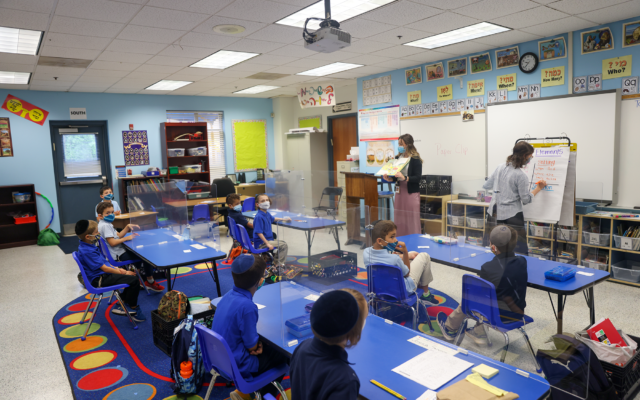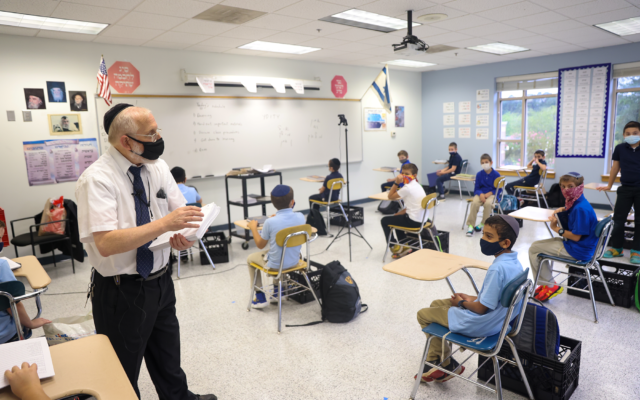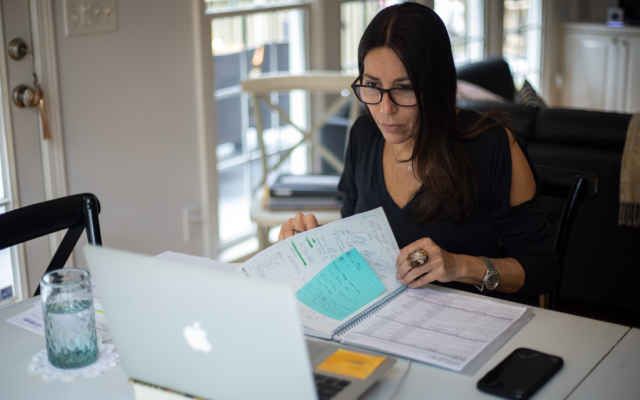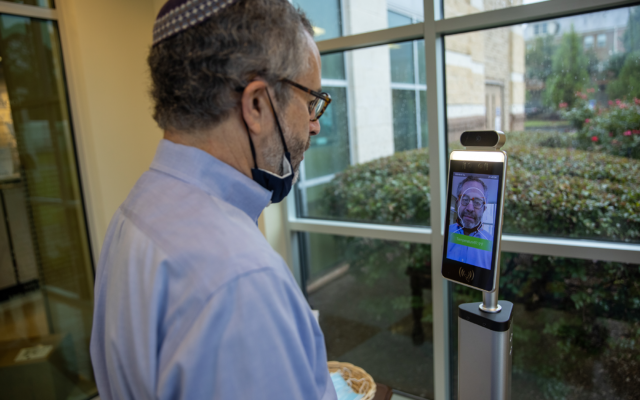How Jewish Schools Changed During COVID
As schools reopen, Atlanta Jewish Times photojournalist Nathan Posner shows how they have embraced the changes to their learning environments.
A rising sophomore at Georgetown University, Nathan plans to major in government and minor in film and media studies as well as statistics, hoping to eventually get into a career creating digital content for campaigns or covering them for the Atlanta Jewish Times and other media outlets.

Over the last few months, as schools reopened, students have faced new learning environments, and with them, challenges. While some schools have been fully online in response to the pandemic, many Atlanta-area Jewish schools have decided to return to in-person classrooms, at least partially, to ensure the best continued education in light of the current situation.
As part of our education issue, I was able to show through photos how learning environments have changed at three schools: The Weber School, Chaya Mushka Children’s House and Torah Day School of Atlanta. These schools represent different approaches to teaching during the pandemic. Weber used online classes until after Labor Day, when it began having students in person. TDSA used a similar approach, with students returning one grade each day beginning with kindergarteners and continuing through middle schoolers. Chaya Mushka, with its relatively lower student population, was able to bring back all students who wanted to be in person while helping students who would rather do online with that option.

These represent only a fraction of the different approaches that schools have taken to deal with this crisis. While many Jewish day schools reopened at the beginning of the school year, Weber took a different tactic. With a variety of changes taking place at the high school, both for virtual learning and in-person learning after Labor Day, the school invested financially in a variety of changes to help make the shift to this new learning environment.
As Weber embraces these new changes, it also reverted to some old standards, including learning in trailers. Last in trailers in 2006, some Weber students will be returning to trailers that have been added to allow for additional socially distanced learning environments.
The school also hired three nurses to help with students, a first for Weber because they didn’t previously have a nurse. While learning was completely remote until Labor Day, both teachers and students had the option to continue remotely after in-person learning resumed.

For students returning to campus, the environment is drastically different. Upon arriving at school, students were required to wear masks, have their temperature taken and then answer COVID-related questions asked by a nurse regarding their health and potential exposure to the virus. Students will be learning in socially distanced classrooms, use hand sanitizers before entering the classroom, and will have to clean up their seats and desks with sanitizing wipes before leaving. On a tour of the school before its opening, Paul Ginburg, associate head of school, explained that half of the changes “are what you see, and half aren’t,” speaking about the hiring of new nurses, improved technology for remote learning, a new HVAC system and other new staffers. As students returned, challenges were expected, and Weber’s solution is to “use Fulton County’s Board of Health input to create a safe health environment for students and staff.”
Amit Rau, a Weber junior, has been learning at home since the school went online in March. “We’re learning a lot more during class time now; we’ve basically had the same idea of things in class, just work more during that time.” Amit admitted, “both academically and socially I’d rather be in person, but obviously, for safety reasons, it’s better to be online.”
TDSA, a K-8 school in Druid Hills, has taken a similar approach to opening, using a staggered model of bringing in kindergarten through fourth grade before bringing in middle school students, who are better able to learn remotely. The school has given students the option to learn remotely, setting up teachers with cameras and microphones so they can engage students both at home and in person.
In addition, there’s more time for entry and dismissal so students can be dismissed in a socially distanced way. The school used the summer to build larger classrooms, install new filters for the HVAC system and a UV system to help kill the virus, along with plexiglass for younger students in kindergarten through third grade. The plexiglass was installed on desks so that students can take their masks off for a time.
Using a mobile app, parents are required to fill out a form before students are let into school, answering questions about possible exposure and symptoms within the student’s family. TDSA has also been using larger spaces, such as the gym for large gatherings such as Tefillah, but in a socially distanced manner.

Chaya Mushka, a preschool and K-8 Chabad community school, has used a largely in-person approach, with a variety of safety measures. While students who wish to learn at home are able to do so, those who come in person face a changed learning environment. Students are required to wear masks, when not behind plexiglass dividers at desks, that are attached to lanyards to ensure students don’t lose them. Having all students back on campus isn’t possible for everyone but neither is online learning. As executive director Rabbi Isser New explained, “Some students are limited, whether by ability or online access.”
Everyone entering the building has their temperature checked. New explained the difficulty of keeping everyone safe and calm. “The hardest part is kids not feeling well and handling all the protocols, making sure parents are aware of things; and not every time a kid sneezes do they have COVID, but the hardest part is the heightened anxiety. We do well by sticking to the handbook and staying on top of things.”
While these schools have taken varying approaches to opening schools, they help show how learning environments have changed in the time of COVID-19, everything from how and where students learn to how they arrive and leave school. As students and teachers embrace these changes and try to do their best in light of the circumstances, other aspects of school remain the same. Students still take tests, complete homework and learn in classroom environments, but now those classrooms may not be at school anymore.
- COVID
- COVID-19
- Coronavirus
- Schools
- Education
- The Weber School
- Chaya Mushka Children’s House
- Torah Day School of Atlanta
- Jewish Day Schools
- Paul Ginburg
- Amit Rau
- Virtual Learning
- TDSA
- Tefillah
- Rabbi Isser New
- social distancing
- Nathan Posner
- Virtual Schooling
- Mask mandate
- School reopening
- pandemic
- Labor Day



comments